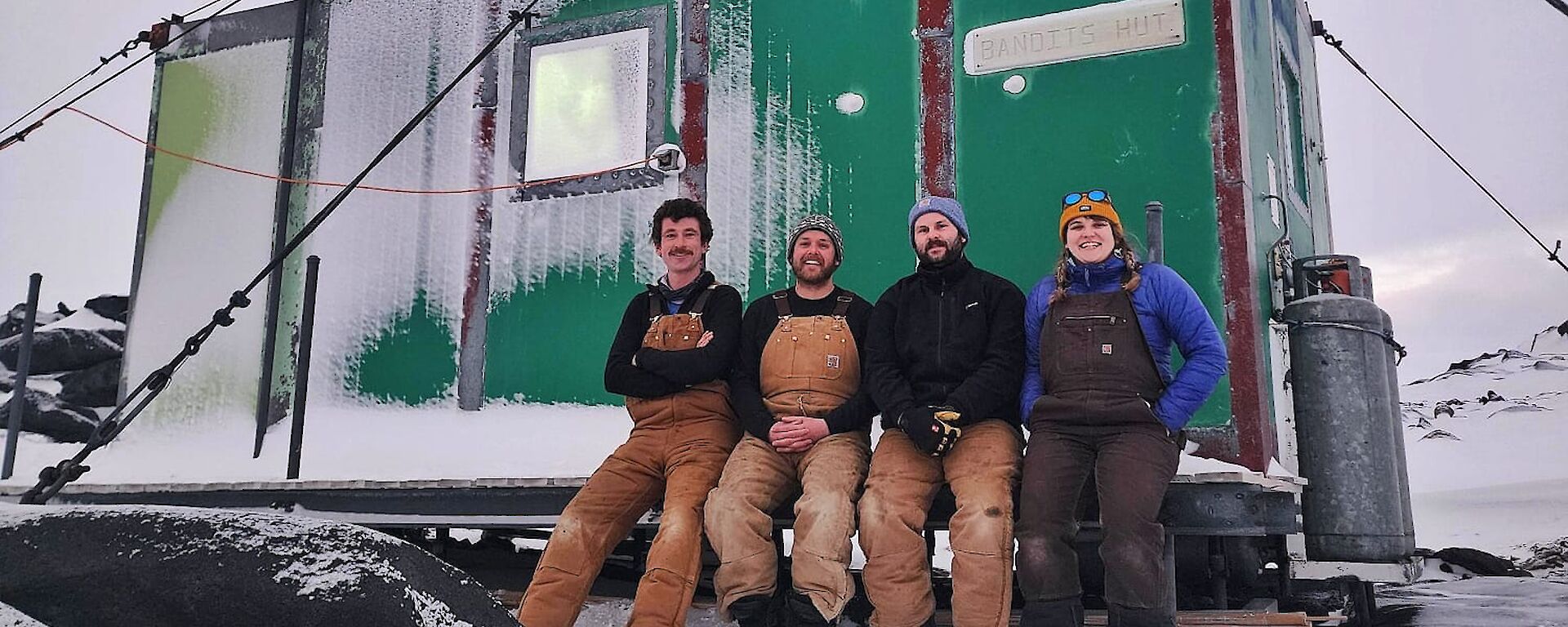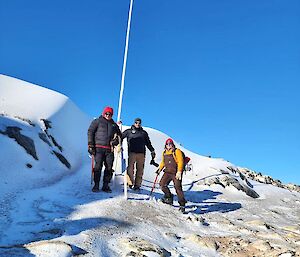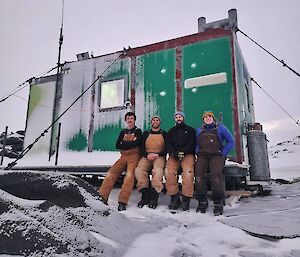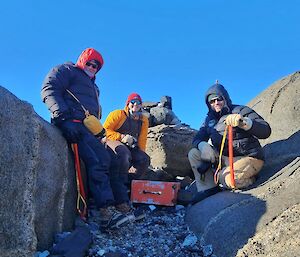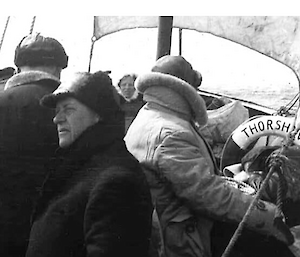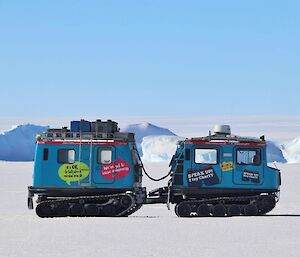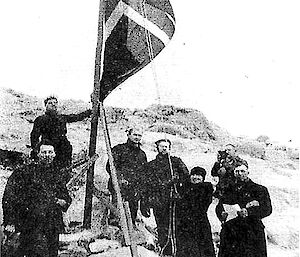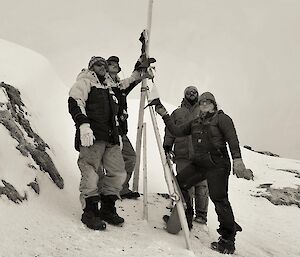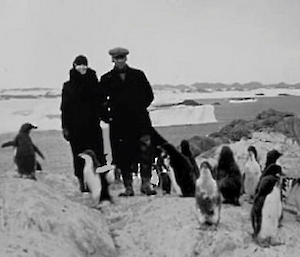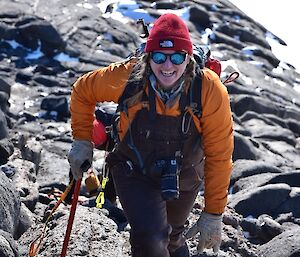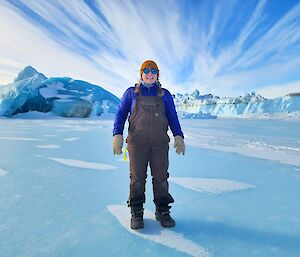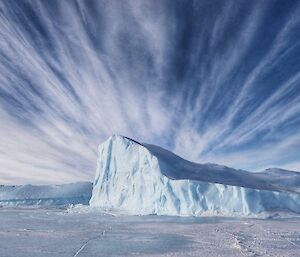Retracing the steps of Caroline Mikkelsen, the first woman to set foot in Antarctica
What a year it has been. The experiences we’ve shared, the sights we’ve seen, the challenges we’ve encountered and the emotions we’ve felt will take months, perhaps years, to truly process. As our season draws to a close, rather than attempting to make sense of it all in an Icy News article, I want to share a story that, in my view, deserves far greater recognition within our Antarctic Program’s history: the remarkable tale of the first woman to set foot in Antarctica, Caroline Mikkelsen.
Her story is one of quiet courage and enduring mystery, an elusive blend of history, hearsay, and heroism. In 1935, Danish woman Caroline Mikkelsen joined her husband, Norwegian whaling captain Klarius Mikkelsen, aboard the Thorshavn, a vessel operating under Norwegian whaling magnate Lars Christensen. The crew’s mission was to restock Norwegian whaling stations scattered across the Antarctic and sub-Antarctic.
On 20 February 1935, the Thorshavn anchored near what we now know as the Vestfold Hills. A crew of seven, including Caroline, rowed ashore to a small island within the Tryne Island group, approximately 30 kilometres north of today’s Davis station. The crew erected a wooden flagpole, raised the Norwegian flag, and left a cache of emergency supplies for any who might later pass through. News of the event spread (even the New York Times covered it!) though Caroline’s name was notably absent from many reports.
Some sources indicate that Klarius’s boss, Lars Christensen had long hoped that his own wife, Ingrid Christiensen, would become the first woman to set foot on the continent, though earlier voyages with Ingrid on board never provided the opportunity. As such, some believe this may be the reason Caroline’s achievement is often overlooked. Furthermore, following Klarius Mikkelsen’s death, Caroline remarried, and it is believed by some that for many years the story of her Antarctic landing remained quiet, perhaps out of respect for her new husband.
Decades later, after Davis station had been established, a party of expeditioners discovered the site of Mikkelsen’s landing, known today as Mikkelsen Cairn. Debate still lingers over whether the Thorshavn’s crew believed they had stepped onto the mainland or realised it was an island off the coast. Regardless, the site was officially designated a Historic Site and Monument No. 72 under the Antarctic Treaty and is high on many expeditioners “to see” lists.
In 1998, AAD scientists John Gibson, Ian Norman, and Jim Burgess examined records and concluded that Mikkelsen landed on an island near the mainland, rather than the continent itself, and hence was not technically the first woman to set foot on Antarctica proper. Yet, as their research and decades of Davis station investigations reveal, her role as a pioneer is undeniable.
Records indicate in 1931, Christensen and Mathilde Wegger became the first recorded women to actually see the Antarctic continent, though there’s no records to suggest that they went ashore. In a Sydney Morning Herald article, Sir Douglas Mawson described sighting two women aboard a Norwegian ship in the ice, speculating they might have been the first women to reach the region. Further, in 1937, just two years after Caroline Mikkelsen landed on the Tryne Islands, Ingrid Christensen, her daughter, and two female friends sailed south to visit the Norwegian whaling stations with husband Lars Christensen and Klarius Mikkelsen. Here some suggest she technically became the first woman to set foot on the Antarctic mainland with her male counterparts, at Scullin Monolith, just 160 km east of Mawson station.
While purists may argue that Mikkelsen did not technically step on the Antarctic mainland, her achievement remains extraordinary. She ventured into one of the harshest environments on Earth at a time when women were rarely seen beyond the domestic sphere, let alone on polar expeditions. In my eyes, Caroline Mikkelsen rightfully holds the title as the first woman to set foot in Antarctica, even if her boots touched an island a mere five kilometres from the mainland, which in winter, is seamlessly bound to the continent by sea ice.
This season, I was fortunate to retrace Mikkelsen’s steps on two fantastic journeys across the sea ice to the Tryne Islands in the northernmost region of the Davis station area. Standing there atop the steep hill amongst the flagpole, penguin rookery remains, and cairn of memorabilia, was both inspiring and haunting, imagining what it must have been like for Caroline almost 90 years ago. My own experience was undoubtedly more comfortable: travelling inside a heated Hägglunds, espresso coffee in one hand, electric hand warmers in the other and sharing a two-kilogram bag of Natural Confectionary lollies supplied by a generous fellow expeditioner. I travelled with mates I trust and respect, and never once were my abilities nor my right to be venturing alongside my male counterparts on the ice questioned - a reality Caroline could never have imagined. Sure, four summers and a winter into my Antarctic career and I still can’t properly aim into an infamous orange Nalgene bottle (if you know, you know), but I can pull my weight when it comes to driving, navigating, trip leading, setting up the hut, starting up the generator and whipping up a mean hut cheeseboard on overnight trips in the vicinity of the Mikkelsen Cairn. On both the ‘Benditos’ and ‘Chippies Walkabout tours’ trips I was able to safely and equally partake in two fantastic adventures, exploring and learning about the area we’ve called home for the past 13 months. A huge thankyou to Malvis, Greeny, Ben, Adam and Alex.
When we think of the “Heroic Era” of Antarctic exploration, names like Scott, Mawson and Shackleton dominate the narrative. But beyond 60° south, women’s contributions have often been obscured, a phenomenon which some academics refer to as “snow blindness” - a metaphor for the omission of women’s achievements in Antarctica prior to the 1970s. Before the 1970s, most Antarctic programs excluded women altogether, despite evidence that women had been applying to work in Antarctica since 1904. Those who did venture south often did so unofficially, such as botanist Jeanne Baret, who disguised herself as a man to travel south, and Nel Law, the first Australian woman to set foot on the continent, who famously stowed away on her husband Phillip Law’s ship, bound for Mawson Station in 1961. In this same category of brave women, I reflect on Americans Edith Ronne and Jennie Darlington, the first women to winter in Antarctica during 1947-1948, as well as Diana Patterson, who in 1989, became the first female Antarctica station leader at Australia’s own Mawson station.
Caroline Mikkelsen and the women of her era walked so that us women of today could run. Visiting Mikkelsen Cairn and conducting further research on Caroline’s story has left a lasting imprint on me. Her courage continues to inspire my commitment to empowering women to come to, and thrive in, this extraordinary continent. Antarctica has a way of getting into your blood, it becomes addictive in a way, to the point in which I hope to keep returning—and to keep encouraging other women to do the same—for many years to come, in order to make a long lasting difference to the way in which we understand and operate in Antarctica.
Kasey Williams, BoM Technical Officer
Sources:
Norman, F. I., Gibson, J. A. E., & Burgess, J. S. (1998). Klarius Mikkelsen’s 1935 landing in the Vestfold Hills, East Antarctica: Some fiction and some facts. Polar Record, 34(191), 293-304.
Secretariat of the Antarctic Treaty. HSM 72: Mikkelsen's Cairn. Antarctic Protected Areas Database.
Blackadder, J. (2013). Illuminations: Casting light upon the earliest female travellers to Antarctica. Western Sydney University thesis: Doctoral thesis.
Hug, C. (2024). Caroline Mikkelsen – the first lady in Antarctica? Polar Journal, 20 May 2024

